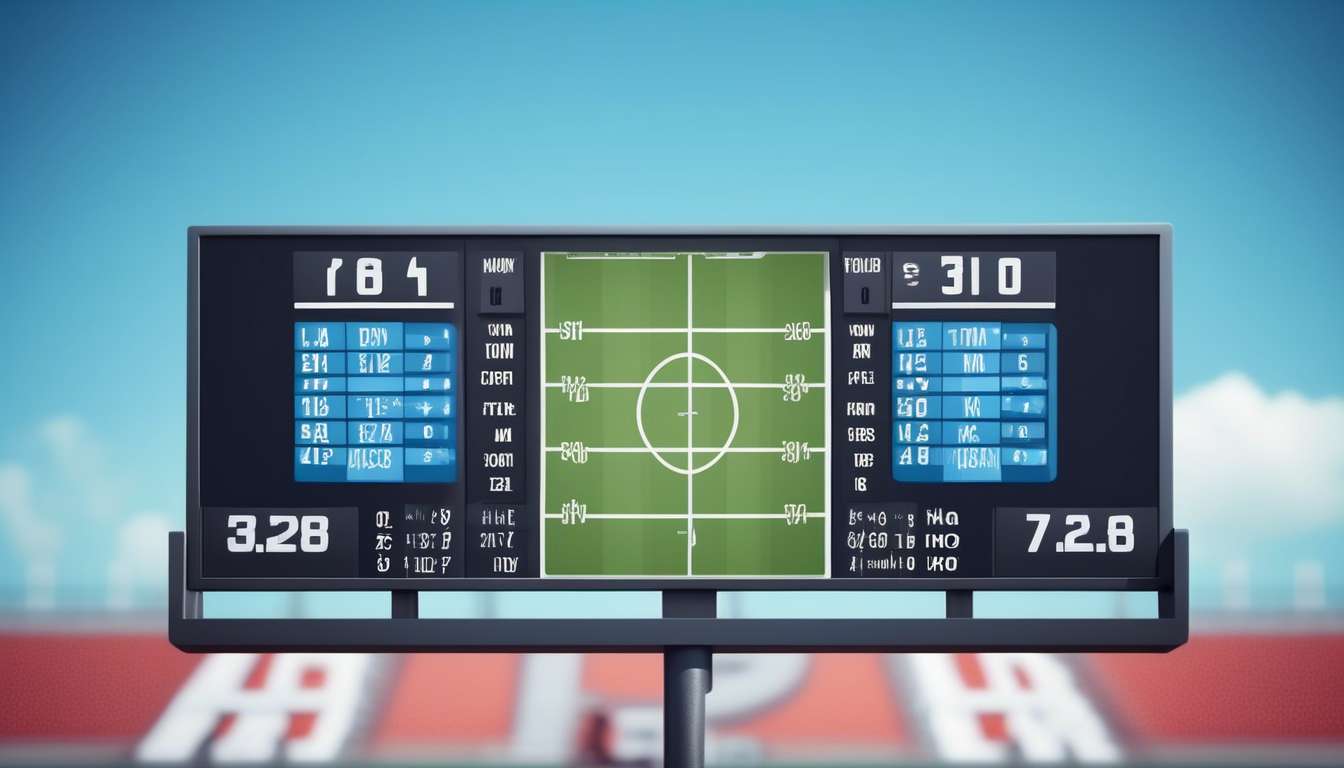When we first ventured into the world of sports betting, one of the most intriguing yet confusing terms we encountered was "the spread." It’s a concept that many of us may have heard tossed around in conversations or seen in betting lines, yet it often remains shrouded in mystery for newcomers.
As we dug deeper, we realized that understanding the spread is crucial to making informed betting decisions. It’s not just about picking a winning team; it’s about understanding how bookmakers level the playing field between two mismatched teams.
The spread allows us to bet on the perceived strength of a team rather than just its ability to win outright. This article is our attempt to demystify the spread, explaining its nuances and how it influences sports betting strategies.
Together, we’ll explore how embracing this concept can enhance our betting experience and potentially lead us to more successful outcomes.
Definition of the Spread
In sports betting, the spread refers to the predicted point difference between two teams, leveling the playing field for bettors. When we talk about point spreads, it’s like joining a community where everyone shares the thrill of predicting outcomes.
The spread allows us to bet not just on which team will win, but by how much, creating an exciting challenge. This shared experience brings us together as we navigate the intricacies of betting odds.
Point spreads are set by oddsmakers, who consider many factors to predict the point difference. For example:
- If Team A is favored over Team B by 5 points:
- Betting on Team A means they need to win by more than 5 points for us to win our wager.
- Conversely, if we back Team B, they can either win outright or lose by less than 5 points.
Understanding spreads makes us part of a knowledgeable group, united by the excitement of informed betting.
Purpose of the Spread
Oddsmakers use the spread to create a balanced betting environment, making both teams appealing to bettors regardless of their actual skill levels. The spread serves as an equalizer in sports betting, ensuring that each game offers a fair chance for wagers on either side.
Point spreads level the playing field by:
- Giving the underdog a points advantage
- Requiring the favorite to win by a certain margin
This entices us to engage with betting odds more thoughtfully.
As a community of bettors, we thrive on the excitement and camaraderie that sports betting brings. The spread allows us to unite in shared experiences, whether we’re backing the underdog or rallying behind the favorite.
Point spreads add a strategic layer to our betting decisions by encouraging us to analyze teams beyond just their win-loss records.
Through the spread, we can engage with sports on a deeper level, fostering both competition and connection within our betting circles. By understanding its purpose, we enhance our collective enjoyment of the game.
How the Spread Works
To understand how the spread works, we need to examine how oddsmakers set a point differential between two teams. This point spread levels the playing field, creating an opportunity for betting with balanced odds.
Oddsmakers analyze various factors to determine the spread, including:
- Team performance
- Injuries
- Historical matchups
Essentially, they predict how many points one team will win or lose by against the other.
When we bet against the spread, we’re not just picking a team to win; we’re considering if they’ll cover the point spread. For instance:
- If a team is favored by 7 points, they need to win by more than 7 for a spread bet on them to be successful.
- Conversely, an underdog can lose by fewer than 7 points and still cover the spread, or they can win outright.
Point spreads make games more exciting as they encourage us to think strategically and feel connected to every play, fostering a sense of community among bettors.
Impact on Betting Odds
Point Spreads and Betting Odds
Point spreads play a crucial role in sports betting by influencing both the probability of outcomes and the potential payout for bettors. Point spreads serve as a leveling tool, ensuring a more balanced playing field between teams.
- The spread dictates how much a favored team must win by to "cover the spread."
- This directly impacts the perceived risk associated with each bet.
Impact on Betting Odds
Betting odds are closely tied to point spreads, affecting payouts and perceived challenges:
- A larger spread often results in a higher potential payout, as the underdog faces a greater challenge.
- A smaller spread typically offers lower odds, indicating a more evenly matched contest.
Engagement and Understanding
By understanding the relationship between spreads and odds, we can enhance our engagement with other bettors. This shared knowledge allows us to:
- Exchange insights and experiences.
- Deepen our collective understanding of sports betting.
Together, we navigate this intricate landscape, embracing the nuances and excitement that spreads and odds bring to our betting endeavors.
Spread Betting Strategies
Let’s explore effective strategies to leverage point spreads and maximize our betting success.
Analyze Team Performance Trends
By examining recent games, injuries, and matchups, we can gain insights into how teams are likely to perform against the spread.
Understand Betting Odds
Understanding betting odds allows us to gauge the likelihood of outcomes and make informed decisions.
Line Shopping
- By comparing point spreads across different sportsbooks, we can identify the most favorable spreads.
- This gives us a crucial edge in maximizing our potential returns.
Timing
Betting early or late can influence our odds, as spreads often shift based on new information or betting volumes.
Community Insights
Engaging with fellow bettors in forums or on social media can provide us with diverse perspectives and tips.
- Setting limits and avoiding reckless bets ensures our betting journey is sustainable.
- This helps in maintaining discipline and protecting our investments.
Together, these strategies can help us navigate the exciting world of spread betting with confidence.
Examples of Spread Betting
Let’s delve into a few real-world scenarios where spread betting comes into play, illustrating how these wagers work in practice.
NFL Example:
Imagine we’re betting on an NFL game where the New England Patriots are facing the Miami Dolphins. The spread might be set at -7 in favor of the Patriots. This means:
- If we bet on the Patriots, they need to win by more than 7 points for our bet to succeed.
- If we back the Dolphins, they must either win outright or lose by fewer than 7 points.
NBA Example:
Consider an NBA game where the Los Angeles Lakers might be favored with a -5 point spread against the Golden State Warriors. In this case:
- If we bet on the Lakers, they must win by more than 5 points.
- Conversely, if we choose the Warriors, they should win or lose by fewer than 5 points.
Impact of Point Spreads:
- Point spreads level the playing field, making games more exciting and competitive.
- They affect the betting odds, offering us a shared experience and deeper engagement with the sport.
By understanding these dynamics, bettors can enjoy a more strategic and thrilling wagering experience.
Spread vs. Moneyline Betting
In sports betting, understanding the distinction between spread and moneyline wagers is crucial for making informed decisions. These two types of bets cater to different preferences and strategies.
Point Spread Betting
- The spread, or point spread, levels the playing field.
- It allows us to bet on the underdog or favorite with adjusted odds.
- We’re not just betting on who wins, but on how much they win or lose by.
- It’s about predicting the margin of victory, which can make games more thrilling.
Moneyline Betting
- Moneyline betting is straightforward.
- We’re simply picking who we think will win the game outright.
- There are no concerns about margins or spreads—just a win or loss.
- Moneylines come with their own set of betting odds, reflecting the likelihood of each team winning.
By understanding these differences, we can choose the betting style that best aligns with our strategy. This knowledge enhances our collective experience and helps us make more informed decisions in the world of sports betting.
Understanding Point Spreads
Grasping the concept of point spreads is essential for anyone wanting to delve deeper into the nuances of sports betting. Point spreads level the playing field between teams of varying strengths. Essentially, the spread is the number of points by which a favored team is expected to win, offering a balanced betting environment.
Understanding Point Spreads:
- By understanding point spreads, we can assess how bookmakers set betting odds based on team capabilities.
- For example, a spread of -6.5 means:
- The favored team must win by more than 6.5 points for the bet to succeed.
- If we back the underdog, they can lose by up to 6 points, and we still win.
This dynamic allows us to engage with each other, discussing strategies and sharing insights, thus fostering a sense of community. Together, we navigate the thrilling challenges of sports betting with informed decisions.
Conclusion
Understanding Spread in Sports Betting:
Spread betting is a method designed to level the playing field between teams, making games more engaging for bettors.
Key Benefits of Spread Betting:
- It offers a unique wagering option compared to traditional moneyline betting.
- It allows bettors to focus not just on who wins, but by how much.
Strategies for Successful Spread Betting:
-
Learn How the Spread Works:
- Understand how points are allocated between the favorite and the underdog.
- Familiarize yourself with terms like "covering the spread."
-
Explore Different Strategies:
- Research team performance, injuries, and other factors that might influence the game.
- Analyze historical data to identify trends.
-
Make Informed Decisions:
- Use insights and data to guide your betting choices.
- Stay updated with the latest sports news and developments.
Continuous Improvement:
- Keep practicing and refining your betting strategies.
- Aim to become a savvy sports bettor by consistently applying what you learn.
By embracing these concepts, you can enhance your sports betting experience and potentially increase your success rate.

